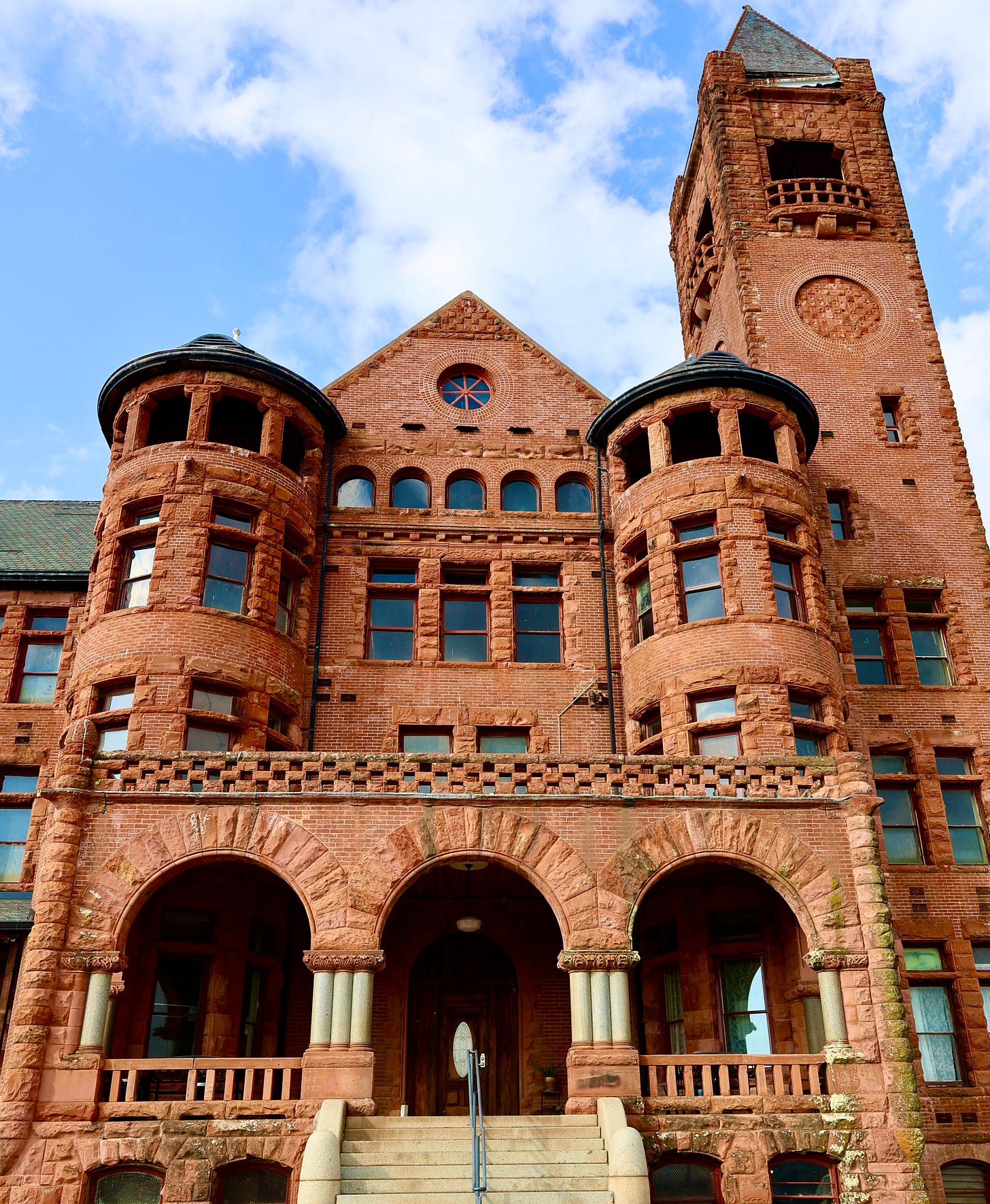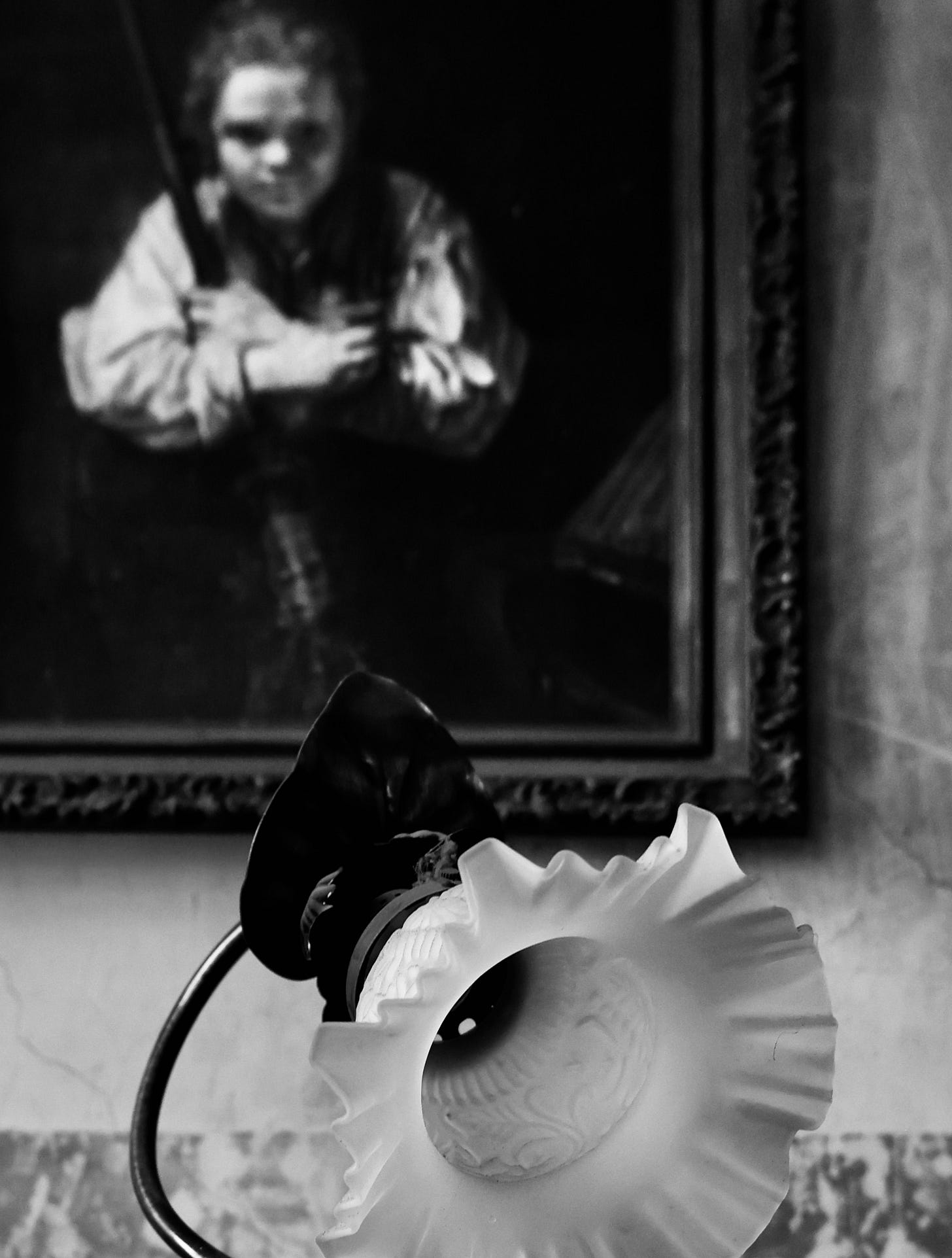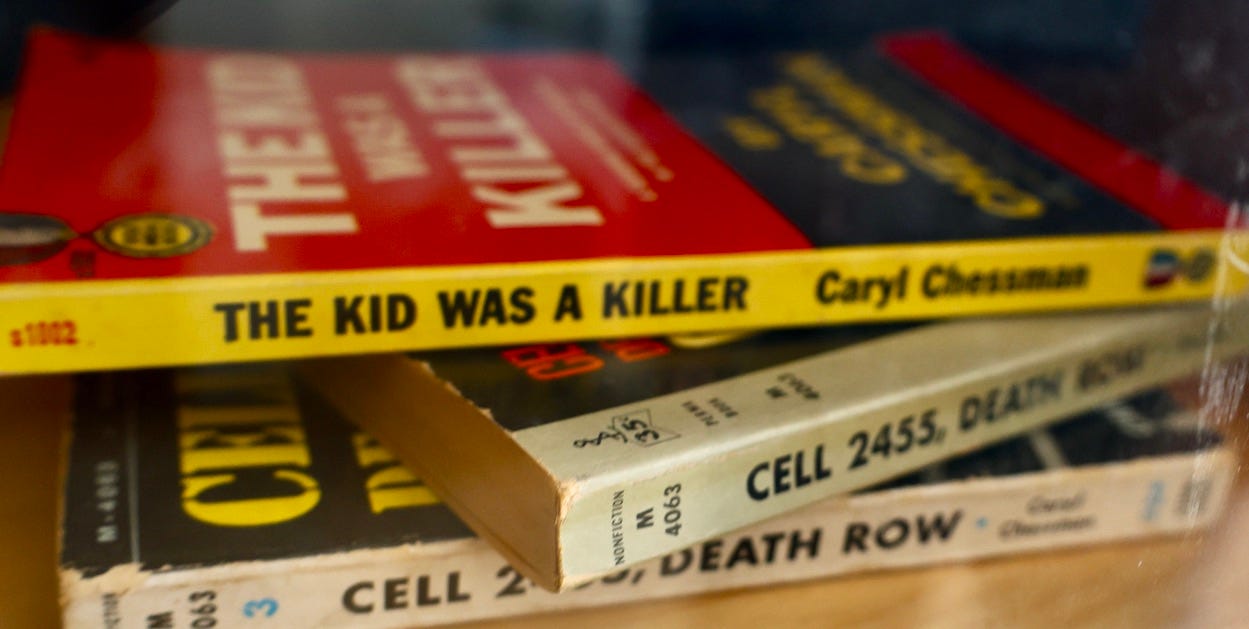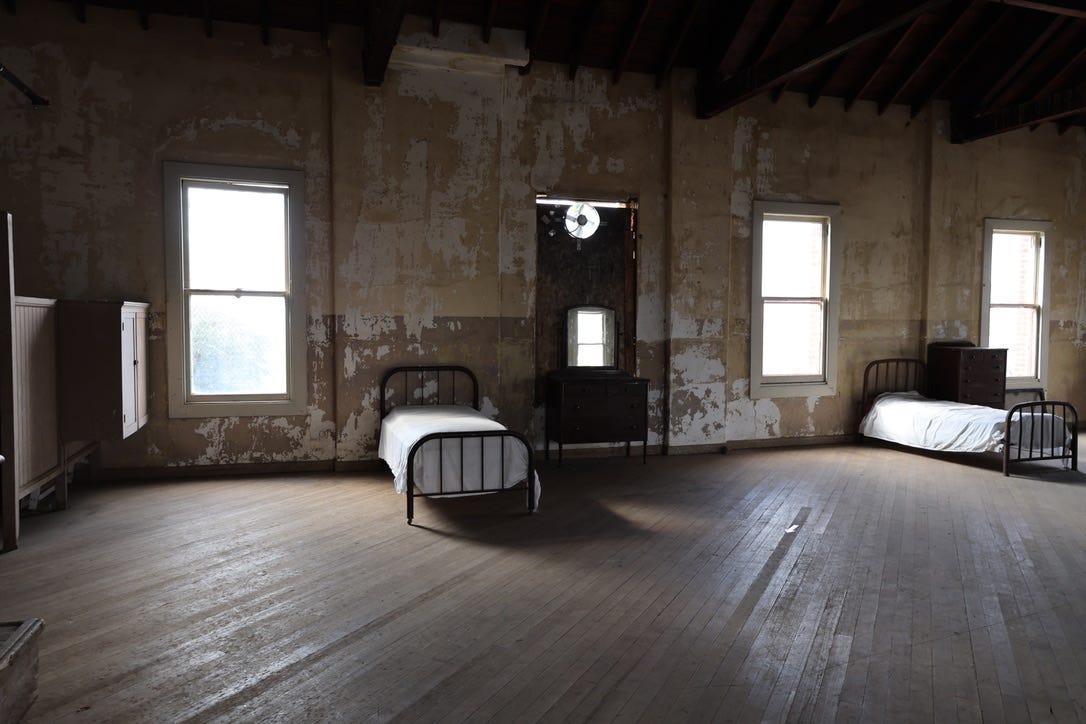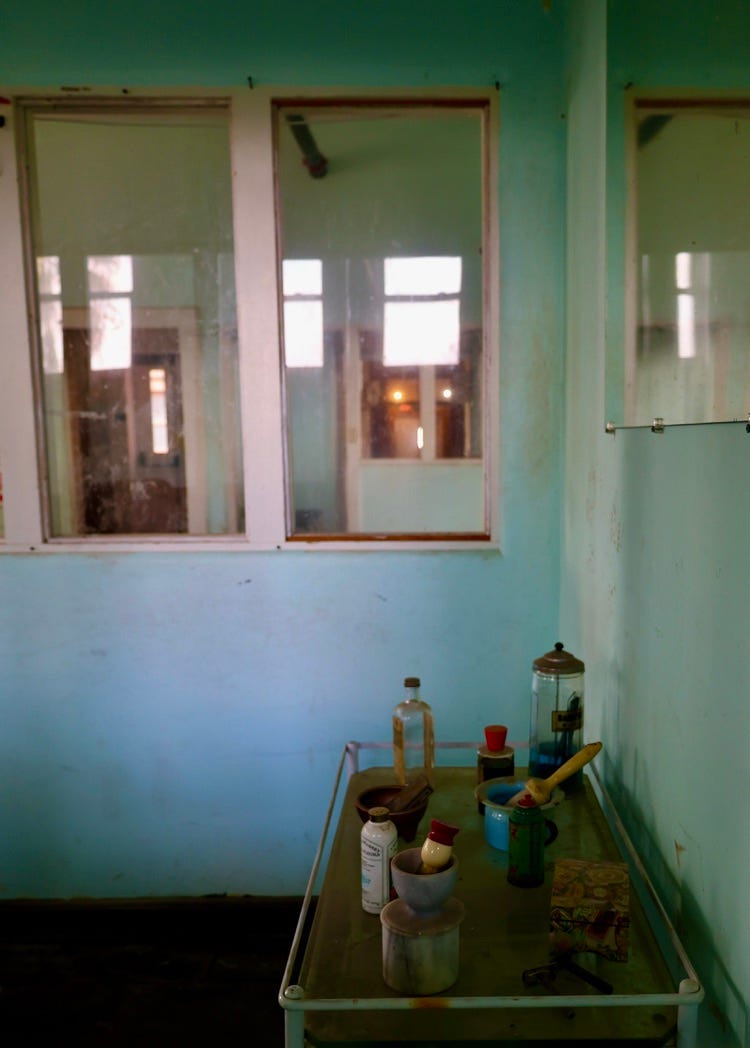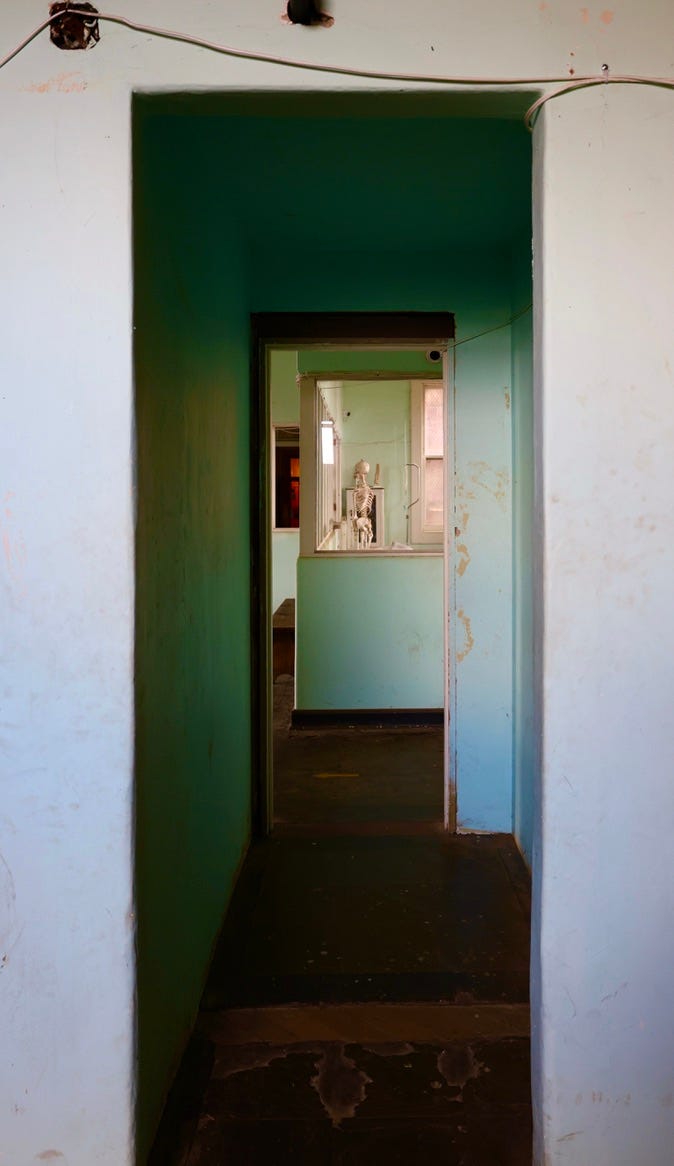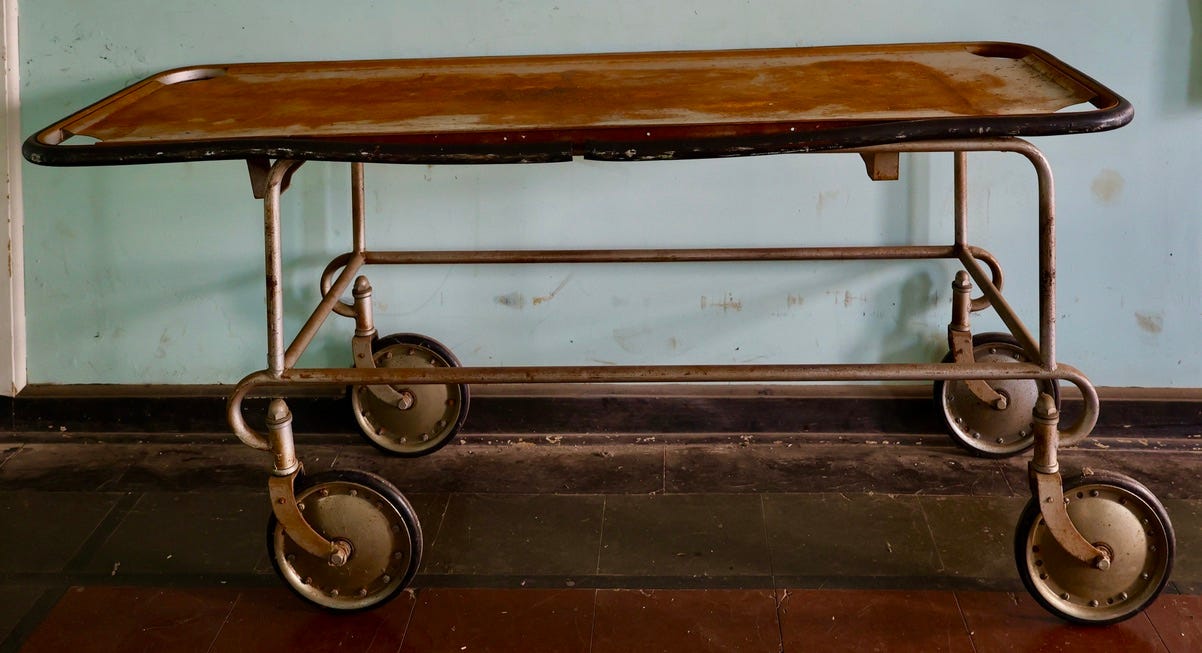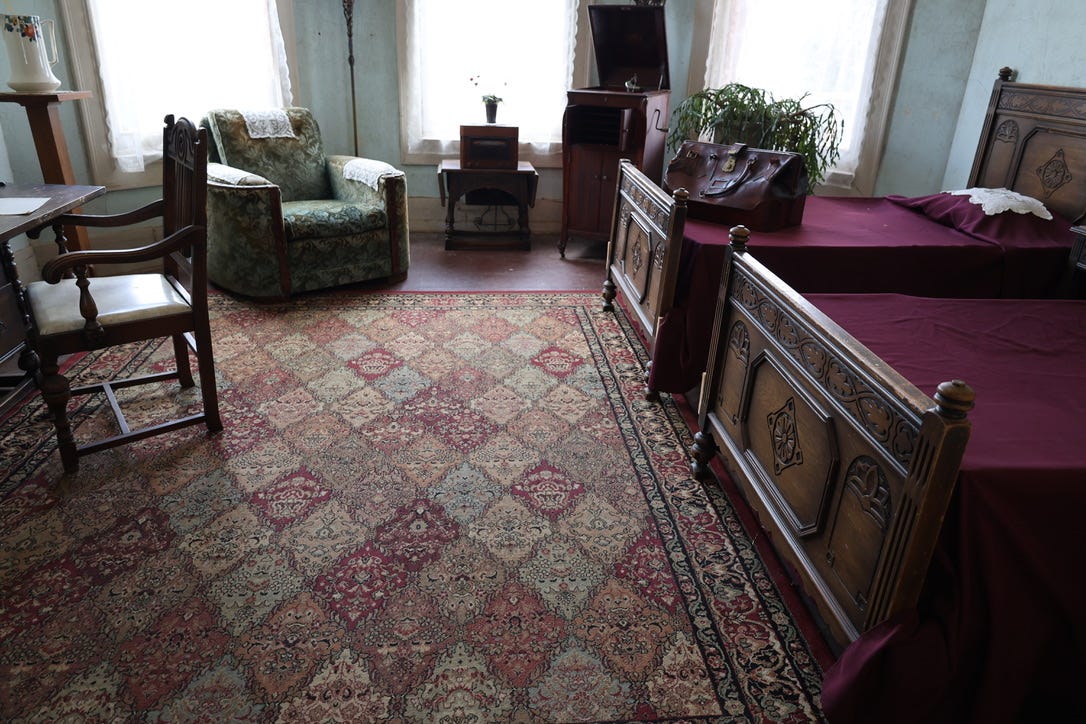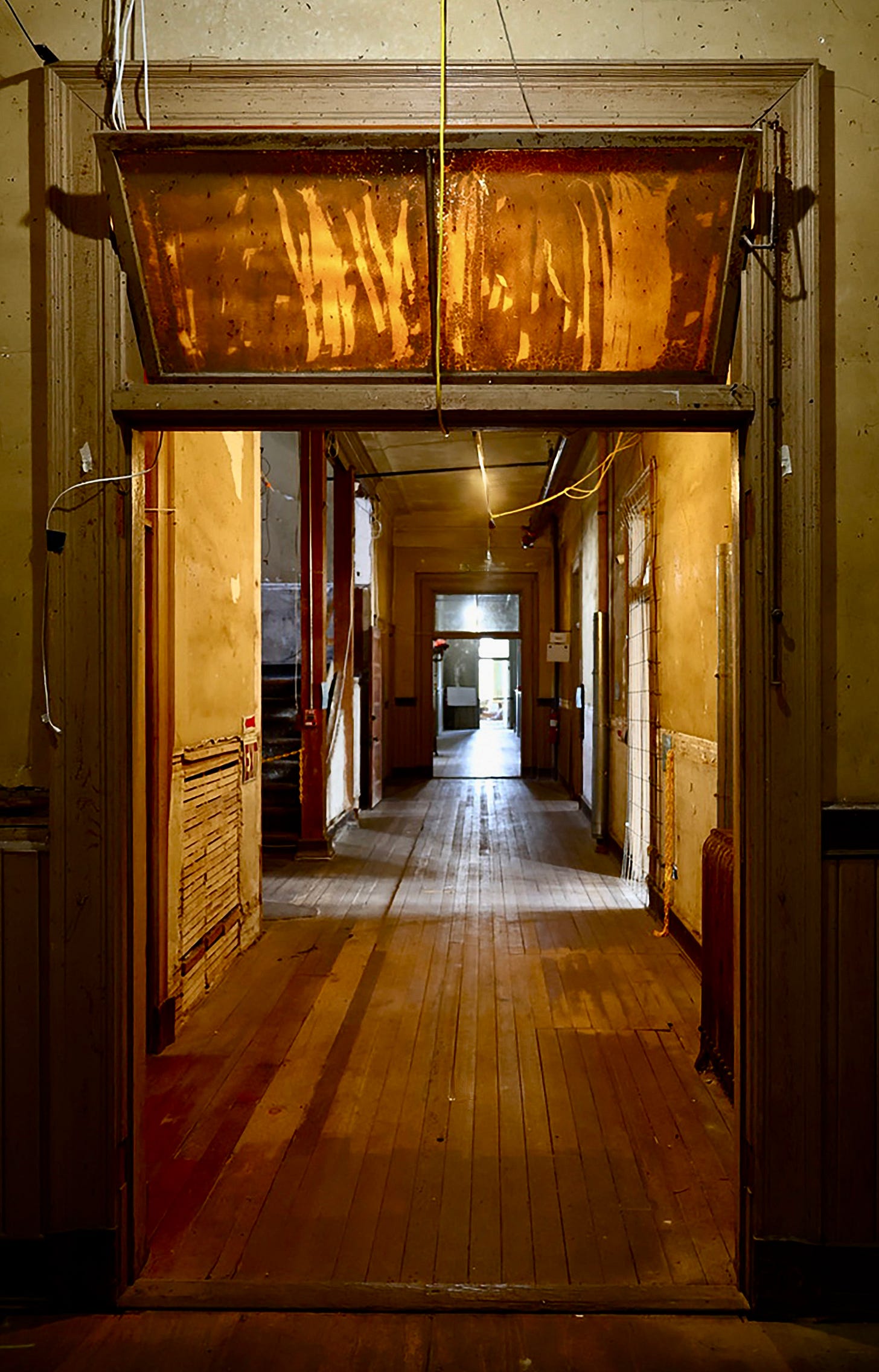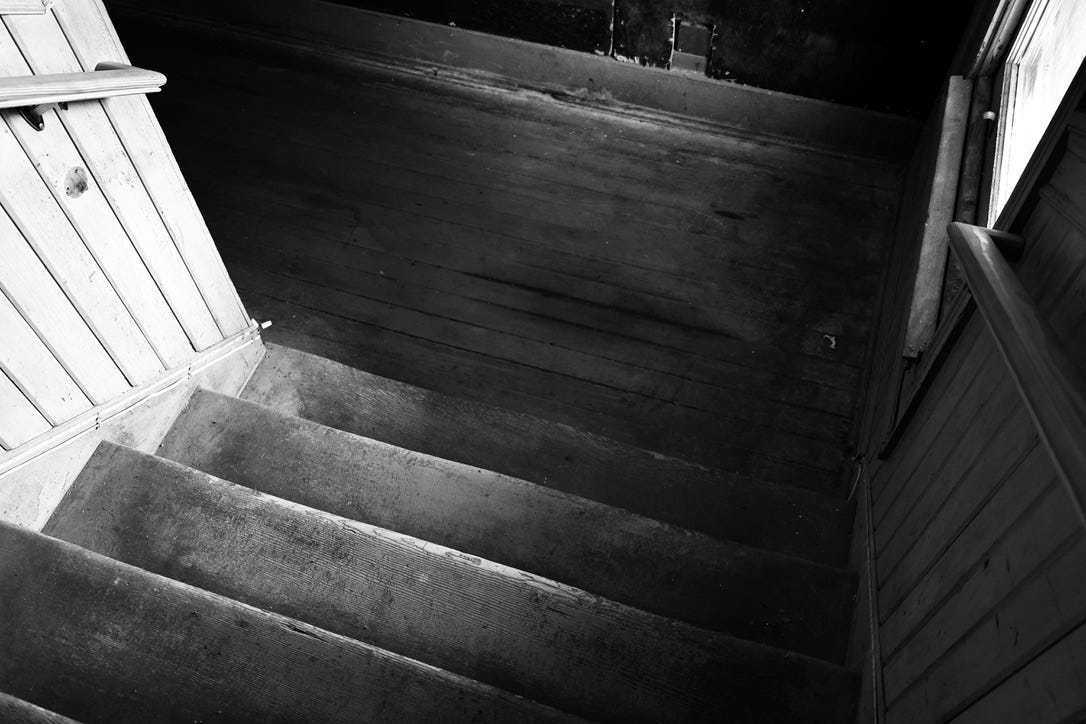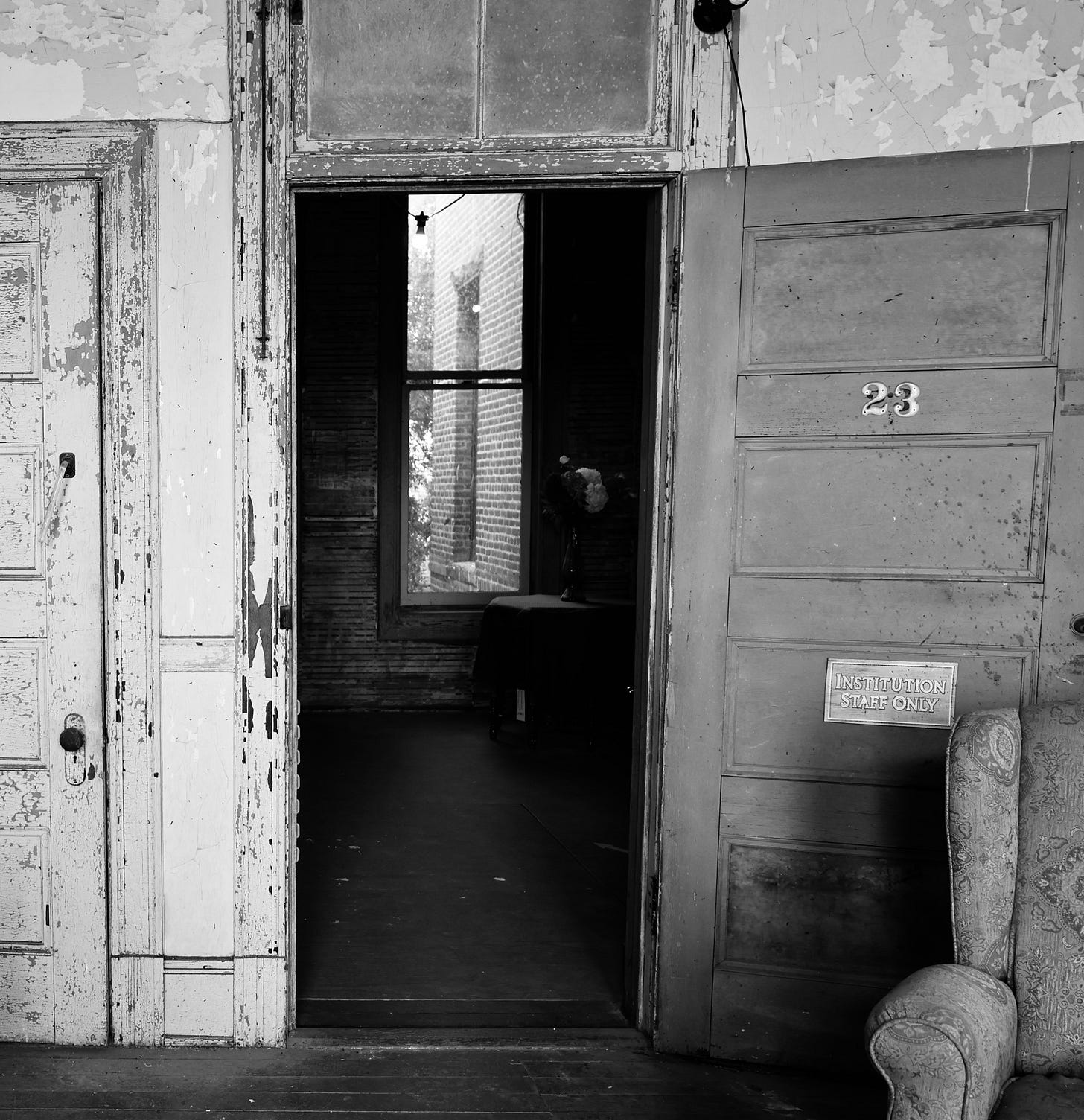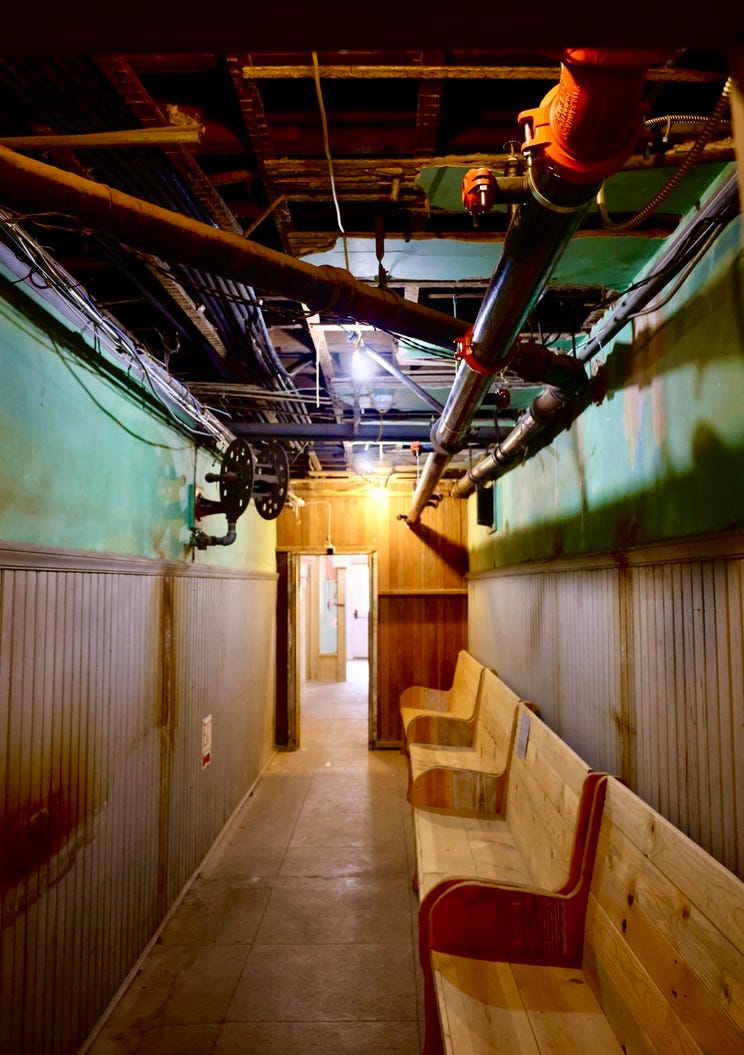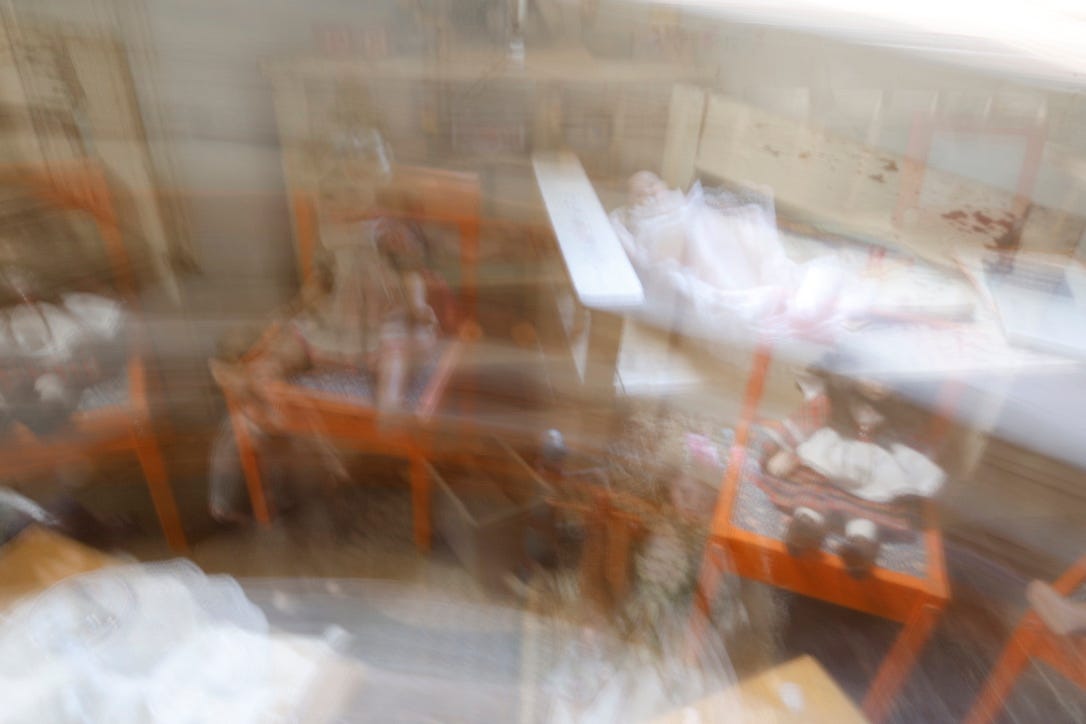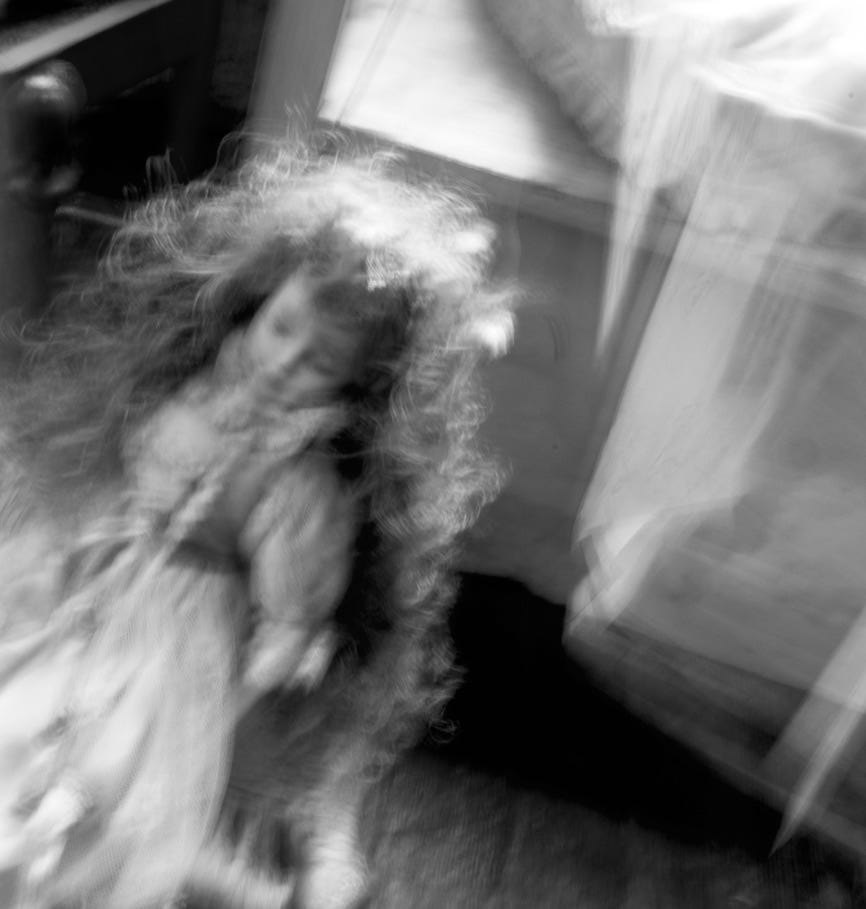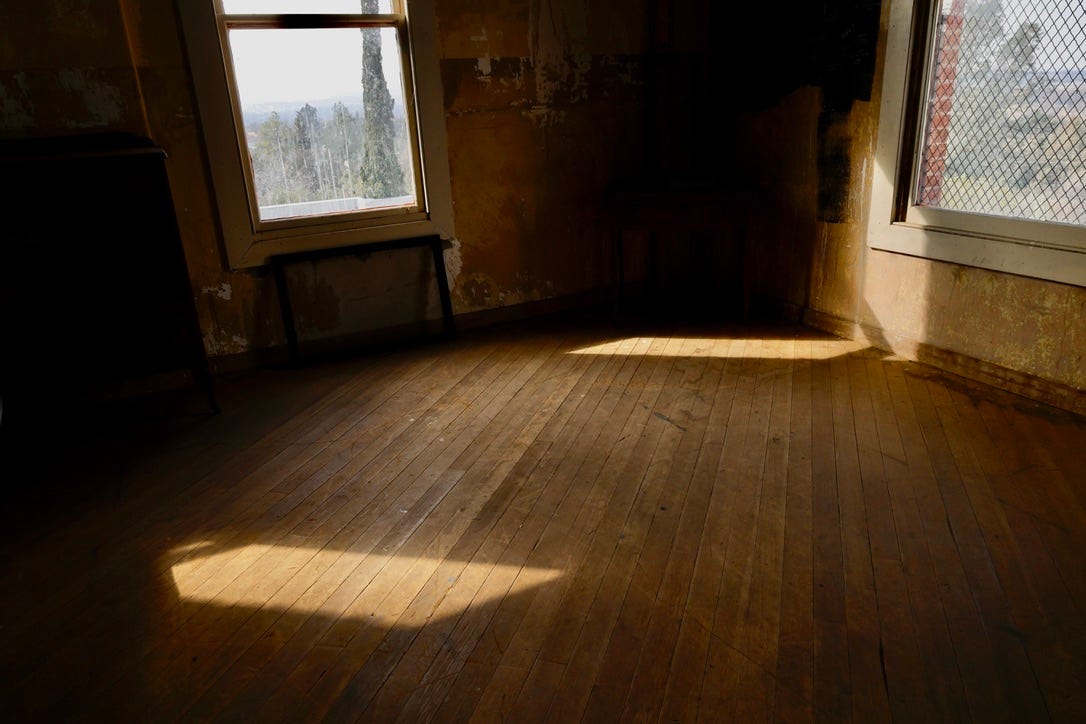A rare opportunity to photograph a landmark that should have seemed creepier than it is, but then it was daytime. What happens at night? Not something I want to test, but then I’ve “seen” a ghost, so I don’t fool around with such myths.
About Preston Castle
My purpose here is not to relate the details of the history of this remarkable building. Claude contributes a summary, and I’ll add some links for further info.
Preston Castle, also known as the Preston School of Industry, is a former reform school located in Ione, California. Built in 1890-1894, it's a remarkable example of Romanesque Revival architecture with its distinctive red sandstone exterior and castle-like appearance.
The facility operated as a youth correctional facility from 1894 to 1960, housing juvenile offenders and providing them with education and vocational training. It was one of the oldest and best-known reform schools in the United States.
The building itself is quite impressive - standing four stories tall with a 100-foot tall tower, built from locally quarried sandstone. Its design was inspired by European castles, making it an architectural landmark in California.
Many notable people spent time there as youths, including country music star Merle Haggard, who was detained there in his teenage years.
There is a tragic history associated with the castle - in 1950, Anna Corbin, the head housekeeper, was murdered in the building. This case remains unsolved and has contributed to the castle's reputation for paranormal activity.
The first children were transferred from San Quentin Prison. Some were just unwanted and some were delinquents. The progressive intention was to provide them with hope for a future. Some succeeded and some did not. Merle Haggard was ultimately successful, but not until he was sent back to San Quentin for trying to escape. Caryl Chessman was a notorious failure.
Thousands of boys slept here
It’s hard to imagine that 50-70 boys might have slept in this room at one time. What were their nightmares? One informative video said that the boys often climbed into the rafters to carve their names on the beams. Sadly, I never looked up: lesson learned.
Of all the rooms and halls, I found the infirmary the creepiest. I can only imagine how brutal life must have been. Abandoned boys under authoritarian rule with a strict military system, older boys in charge of younger. How terrifying, especially when ill.
This is an excellent video including drone shots, though the host jokes too much.
Many of the rooms have been staged to replicate what might have been before the castle was abandoned and all valuables and walls striped bare. Interesting, but hardly compelling. This is a place where, given some time, one’s imagination runs wild.
What’s down those long halls and behind the doors and cracks of a five-story monstrously complex history? Who’s buried in the cemetery or buried secretly somewhere on the property? It’s the things we can’t see that retain the power.
About the paranormal
The Castle has been featured in paranormal shows like Ghost Adventures, Ghost Hunters, The Lowe Files (no videos found), The Unexplained Zone and a couple of movies. The Apparition and A Haunting at Preston Castle. With all that attention over so many years, could there be something there?
My paranormal experience: Paris 1972
In 2017, I was creating a graphic interpretation of Frankenstein: my introduction.
“I’m brought back to a place that, at least on paper and in my imagination, impressed itself upon me 45 years ago. I didn’t know then that Lake Geneva was a location that inspired the transformative literary efforts of Mary and Percy Shelley and Lord Byron 156 years earlier, nor would I have cared. The novel Frankenstein didn’t interest me then; the iconic comedy Young Frankenstein wouldn’t release until 1974.
At lunch one day, I realized I was the only person I knew who hadn’t been to Europe. Having just left a 5-year marriage for the first time, I decided to liberate myself from family, career, LA, and the entire country. I sold my sports car and everything except one little black dress and several books.
In Paris at French school, I met Anne, a traveler from Minneapolis. We shared a room in a 400 year-old flat on the Left Bank, with stone stairs worn by thousands of footsteps. The studio apartment had a bath and a kitchen full of empty cupboards. There was a large paned window at the foot of my bed, with a view of a stone wall beyond. Anne’s bed was close to a desk and a phone. We were leaving for Lake Geneva the next day, so two new students had brought their luggage.
Around midnight, the phone rang, I answered. The call was for Anne. I got back in my bed with a crazy, illogical feeling. I felt convinced that there was something in the room, just a few feet from the head of my bed. I couldn’t see anything but I knew something was there, as if a spectre was occupying a space.
I couldn’t look. I stared out the window, struggled to breathe, tried to light a cigarette with trembling hands. Tried to ignore its presence, as if denying it would make it disappear. Still, it was there, an incorporeal male presence just feet from my head.
There’s something in this room
Anne hung up. As calmly as possible, I asked, ”Anne, how do you feel?” In a flat voice, she replied, “There’s something in this room.”
We sat there petrified. She was as certain as I that something was there. Unable to move, I implored Anne to search under the beds, in the kitchen cupboards, and in the bath. We cast suspicious glances at the luggage, wondering if perhaps something malevolent had entered there. We finally agreed that since it hadn’t hurt us yet, it probably wouldn’t.
An uneasy sleep brought a new day. The presence was gone.
Chateau de Chillon
Still edgy from our nighttime encounter, we traveled to Geneva and later, to a castle beside the lake, Chateau de Chillon. At the drawbridge entrance, I met another traveler. Pacing, he explained that he couldn’t go back into the castle; he was quite sure he’d been there before, as a prisoner perhaps, in another life. He left me with a feeling of dread as I entered.
The walls were made of stone, light in color, but dank. There was a floor beneath the floor, and I descended, only to find that there was yet another floor beneath that floor, through a trap door, below the surface of the lake.
It may or may not have been Byron who carved his name into a pillar. He was inspired to write “The Prisoner of Chillon.” My feelings are conveyed in these excerpts from his poem.
Lake Leman lies by Chillon's walls:
A thousand feet in depth below
Its massy waters meet and flow;
Thus much the fathom-line was sent
From Chillon's snow-white battlement,
Which round about the wave inthralls:
A double dungeon wall and wave
Have made—and like a living grave
Below the surface of the lake
The dark vault lies wherein we lay:
I peered down into the dungeon where men had been chained. The chains remained, silently hanging.
There are seven pillars of Gothic mould,
In Chillon's dungeons deep and old,
…And in each pillar there is a ring,
And in each ring there is a chain;
That iron is a cankering thing,
For in these limbs its teeth remain,
…Below the surface of the lake
The dark vault lies wherein we lay:
…My very chains and I grew friends,
So much a long communion tends
To make us what we are:—even I
Regain'd my freedom with a sigh.
I’ve since read about Mary and Percy Shelley and Lord Byron’s scandalously wild romps around the countryside. Perhaps there is something liberating about Switzerland, as I too had been recently emancipated. Perhaps it was the moon under the Alps or the high thin air.
Like my horrified friend outside the castle, I too had been deeply frightened by something I’d sensed, just days prior in Paris. Perhaps the ghost stories told by Byron and Shelley in 1816 still lingered in the Europe of 1972.
Mary Shelley’s story has brought me back to Chateau de Chillon, along with a feeling that I still can’t acknowledge. This visits me now.” (Frankenstein: A Graphic Interpretation, in collaboration with the Sacramento Public Library.)
In editing the photographs I took at Preston Castle, none captures what I was hoping to feel. Maybe because the most horrifying things remain hidden, imagined. Maybe these two, arranged to represent the families who worked and lived there.
Or this one where there’s nothing there at all.



